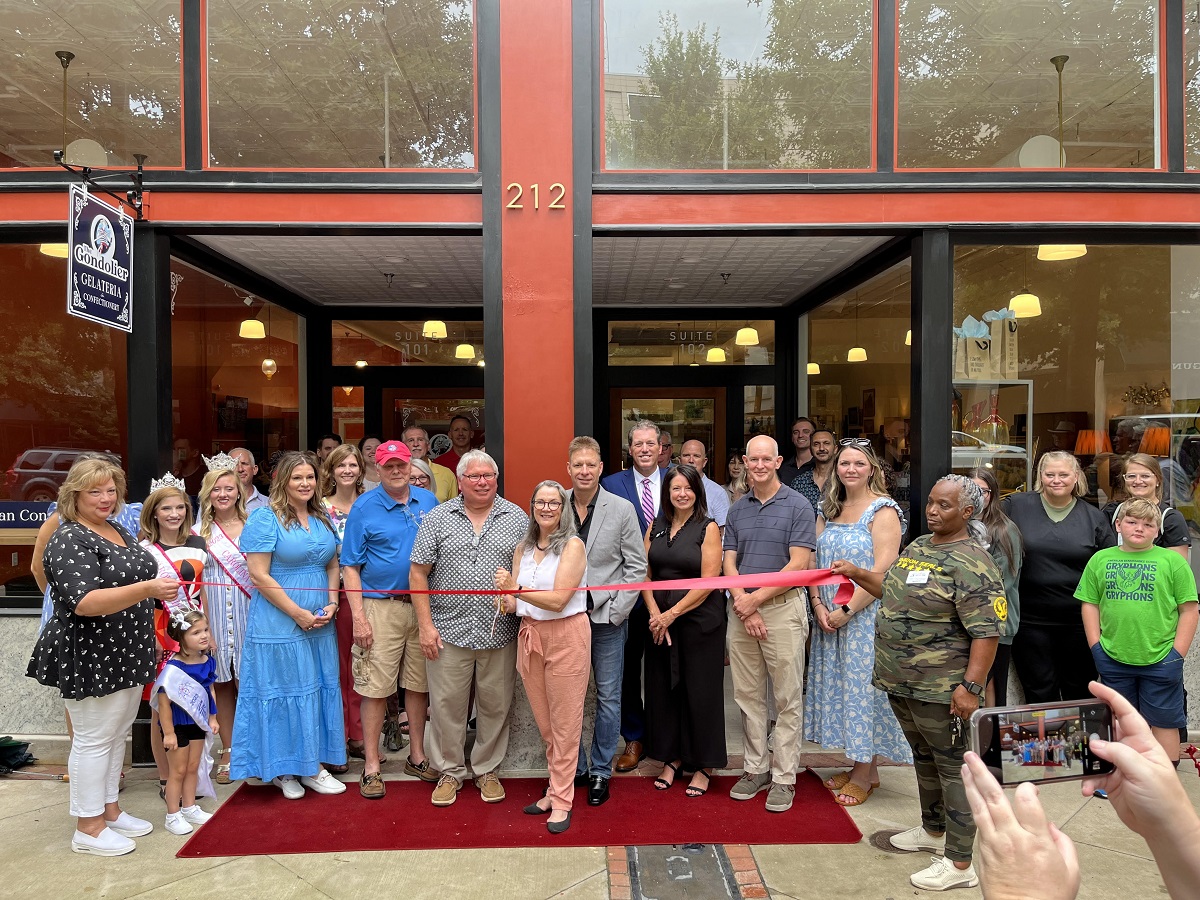
Special to Iredell Free News
Nearly four months after a fire destroyed three commercial buildings in Statesville, community and civic leaders gathered on Tuesday to celebrate a nearby revitalization project.
The Downtown Statesville Development Corporation, the Greater Statesville Chamber of Commerce and Salisbury developers LMY Inc. hosted a ribbon-cutting ceremony and open house for the Jenkins Building at 212 South Center Street.
The $1.5 million adaptive reuse project features two retail spaces and one office space ranging from 1,350 to 1,500 square feet and four luxury apartments. The developers, Michael and Diane Young, took advantage of Historic Investment Tax Credits, requiring construction to follow the U.S. Secretary of the Interior’s Standards for the Rehabilitation of Historic Properties.
“We could have done this project anywhere. We would not be in Statesville if we did not see the potential in Downtown,” the Youngs said. “We hope that more downtown property owners either reinvest or sell. There are plenty of Michael and Diane Youngs out there who would buy and reinvest.”
The two new businesses calling the Jenkins Building home are The Gondolier, a gelato manufacturer that will also carry breakfast sandwiches and confections, and The George, a furniture and design shop. Merrill Lynch, a downtown business that lost its office space to the April fire, has also found a home in the first-floor rear office space.
About the Project
The Jenkins Building is a 10,500-square-foot, three-story building was built in 1922 and was home to Nichols Furniture Company. Except for four offices on the second floor across the front of the building, the building was an open space on both the first and second floor. The building’s giant boiler, located in the partial basement, also served two adjacent buildings. At one point over the past 100 years, the Jenkins Building was combined with the building next door and operated as a department store. Later, the buildings were eparated again and a later tenant added a mezzanine and replaced a majority of the first-floor wood joists and wood flooring with concrete.
When the Youngs purchased the building in September of 2021, they found many defining interior features still intact. The original 15-foot pressed tin ceiling was exposed throughout the first floor, with plaster on masonry walls remaining along both sides. Original heart pine floors remained over the basement at the rear of the first floor. However, the large window openings along the back of the building had been bricked in.
The wide open second floor featured original heart pine floors, plaster on brick walls, and beaded board ceilings at 10 feet. The original walls that once defined the front office spaces overlooking Center Street remained. But over time, the large front windows had been partially bricked in and the rear windows were rotted and boarded up. As with many other buildings the roof and rear windows leaked badly, allowing rainwater to make its way into the basement. Pigeons, their offspring, and their droppings had to be abated.
Adaptive Reuse
While building plans were developed, revised, and reviewed, the Youngs engaged in damage mitigation and selective demolition, replacing the roof, which included a significant degree of roof deck being replaced. This was also the opportunity to add insulation on top of the deck.
To make way for new mechanical, electrical, plumbing and life safety systems, the beaded board and press tin ceilings were carefully removed, only to be restored, reinstalled, and painted later in the project. Existing windows openings were made water and pinion tight. Bricked-in windows were shown the light of day.
After the original first-floor press tin ceilings were restored and replaced, pendant lights with 100-year-old art deco globes were installed. The entire first-floor storefront, which was not original, was removed and a new storefront more suited to the age and style of the building was constructed, featuring large display windows and a sizable transom that spans the entire storefront. The second-floor window openings were reopened to their original size and new aluminum-clad wood windows that matched the original double-hung windows (verified by a historic photograph) were installed.
The apartments have operable aluminum clad wood windows. Insulation was added in the ceiling, floor and walls for energy efficiency and sound dampening. The apartments have all stainless appliances, stack washers and dryers and energy efficient tankless gas water heaters. The interior doors, casings, and other wood moldings are identical to these original features found in the existing 1920s era offices on the second floor.
To meet modern building safety standards, the building is sprinkled. There are two new stairways to the second floor.
The Developers
Based in Salisbury, Michael and Diane Young are no strangers to the process of profitably adaptively reusing commercial historic properties in downtowns using Historic Investment Tax Credits. In Salisbury, they own over 20,000 square feet of space with 100 percent occupancy. They consult and share their experience with others in the historic preservation development community throughout the state.
Both Michael and Diane were former Main Street managers and understand the nuances of what makes a successful downtown tick. The Main Street Program was developed in the 1980s by the National Trust for Historic Preservation to promote economic development within the context of historic preservation. Both Salisbury and Statesville are N.C. Main Street Communities. The Youngs have utilized their unique combination of skill sets over the years to bring about successful adaptive reuse projects. Diane is a licensed general contractor with over thirty years of experience. Michael’s talents lie in marketing and sales, and he has a background in urban economic development.
“When we announced the project, they said good luck,” Michael said. “When we built it and announced our rental rates they said we would never get it.
“Now that we are getting it, they are saying that it is ‘unsustainable.’ Tough crowd! But we used to hear the same thing in Salisbury.”
Brittany Marlow, director of the Downtown Statesville Development Corporation, remembers her excitement when the Youngs submitted a proposal to buy the Jenkins Building.
“The Youngs have won awards from the State Department of Commerce for their projects,” she said. “They know how to implement the historic preservation standards to utilize the Federal and State Tax Credits to be profitable. They wouldn’t be here unless it was going to be worth their while.
“They are willing to share their experience and financial numbers with anyone with the passion for adaptive reuse.”

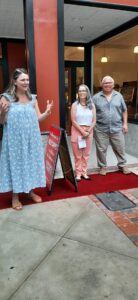
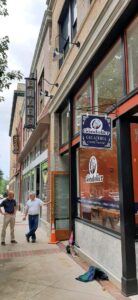
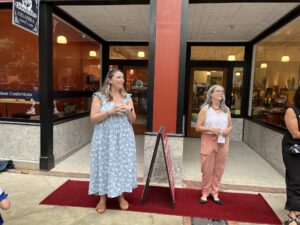
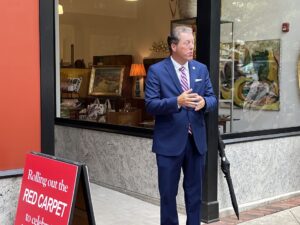
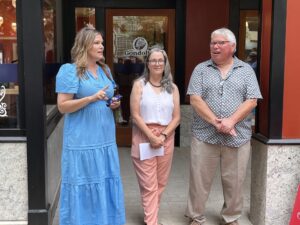
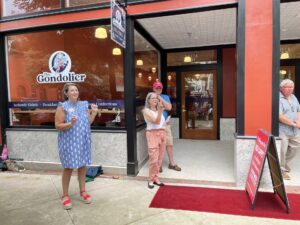
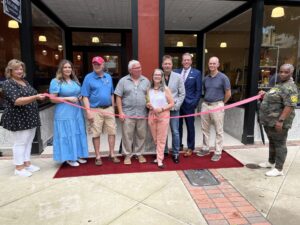
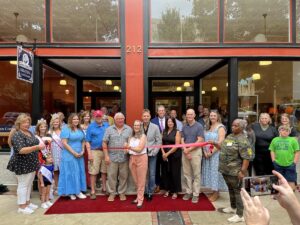



Great job!! Thank you Youngs for investing in Statesville’s downtown. Hope that many other properties downtown will be sold and revitalized. Also need to demo the mall and Newtown area and revitalize that huge area!